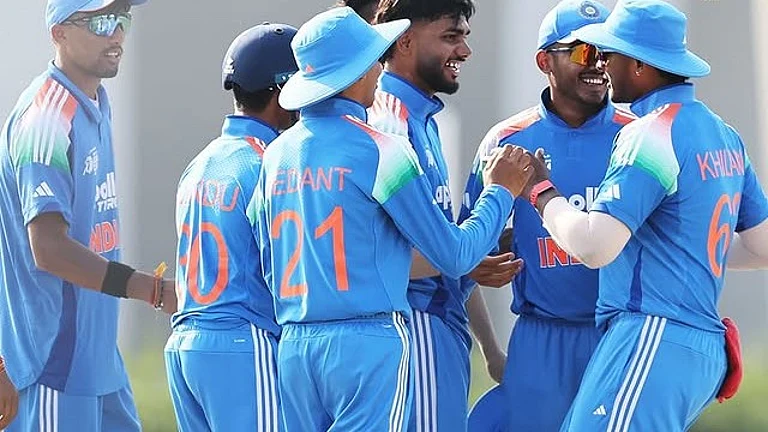The public discourse in India resounds with triumph on the one hand and a nihilistic lament, on the other, over the defeat or near demise of secularism. The former group denigrates the virtues of secularism by calling it a pernicious product of Nehru– Gandhi–Ambedkar thought. This attack on secularism and democracy has sharply increased, the secular people being termed as ‘pseudo-seculars’, ‘sickularists’ and lately, ‘urban Naxals’ and ‘anti-nationals’.
The political dominance of the Hindutva brand of right-wing nationalism since the 2014 elections has put into question the viability of the nation’s secular tradition and its commitment to diversity. Not only does this crisis disfigure the moral and socio-cultural fabric of the nation but it πalso undermines constitutional governance. In fact, the state’s engagement with religion can be said to have been one of the long-standing themes of conflict in India’s democratic experiment.
In order, therefore, to gauge the damage being done and to fix the problem at its roots, we must begin by understanding the nature and evolution of Indian secularism. We must remember that secularism is not an isolated and separate category in the larger realm of democratic governance and social equality. Instead, it is a definitive and fundamental feature of any equal democracy. It is for this reason that this essay claims that a crisis in democracy and constitutional governance is directly a product of distortion of secularism.
Constitutional secularism is of immense import to our notions of citizenship, nationality and civic freedom. Apart from the obvious effects that a crisis in secularism is registering in the electoral realm, we must also pay attention to how that crisis is creeping into other sectors of our nation’s life, ranging from our national media to education to the everyday life of a citizen.
Secularism inherent to the Constitution
Towards the end of the colonial regime in December 1946, the Constituent Assembly was convened to draft a constitution for India. On October 17, 1949, the Constituent Assembly devoted a significant amount of discussion on incorporating the principle of secularism in the Preamble of the Constitution. An amendment proposed by H.V. Kamath, which sought to begin the Preamble of the Constitution with the words “In the name of God”, was defeated. Noteworthy amongst the voices opposing the amendment was Pandit Hridaynath Kunzru, who stated that invoking the name of God was inconsistent with the freedom of faith guaranteed in the Constitution and amounted to showing a “narrow, sectarian spirit”. This debate shows the unique challenge the Constituent Assembly faced while creating a secular constitution for a deeply religious population.
It is amazing that in the backdrop of the partition of the country on religious lines and the creation of the Islamic Republic of Pakistan, the overwhelming Hindu India chose to be a secular country. Had the Constituent Assembly, which consisted of 83 per cent Hindus, chosen to make India a Hindu Rashtra, no one would have batted an eyelid. Their unanimous choice of secularism is ample testimony to the basic ethos of India being secular. I have often asserted that India is secular because Hindus are secular. It is unfortunate that over 5,000 years of ethos is being corrupted by a well-designed project of a section of society.
ALSO READ: What Does Secularism Mean Around The World?
The Constituent Assembly sought to resolve the challenge before it in three main ways: (i) by establishing the framework of fundamental rights that synthesises religious issues, through what later came to be described as a rigßhts-based approach, (ii) by highlighting the role of the judiciary as a manager and arbiter of religious concerns, and (iii) by conceptualising and reworking the model of secularism itself, especially as opposed to its European counterparts.
The rights-based approach
Articles 25 to 28 of the Constitution, all of which are facets of the freedom of religion, or more broadly what is constitutionally referred to as the “Freedom of Conscience”, were incorporated in Part III of the Constitution and thereby became Fundamental Rights. Likewise, Articles 29 and 30, which provided certain cultural and educational rights to minorities, were also incorporated in Part III of the Constitution, thus formally instituting beyond any doubt the non-majoritarian ideology of our Constitution. Such are the ironies and contradictions at play in our nation today that these constitutional provisions themselves are charged as being ‘anti-national’.
ALSO READ: The Rising Tide Of The Right Worldwide
Apart from these fundamental rights, there are other related rights that also broaden and further strengthen the doctrine of secularism. Articles 14 and 15, which grant equality before law and equal protection for all without discrimination based on religion, race, caste and gender, and Article 16 (1), which grants equal opportunity for all citizens in matters of public employment, regardless of the person’s religion, also reinforce the secularist impulse of our Constitution. Moreover, in order to constitutionally extend the cultural and social import of religious equality, Article 51 (A) obligates all citizens to promote harmony and the spirit of common brotherhood and to value and preserve the rich heritage of our composite culture.

Importantly, the freedom of religion guaranteed in the Constitution is not confined to its citizenry alone but extends to all persons including non-citizens, refugees, etc. This point was underlined by the Supreme Court in 1954 in Ratilal Panchand vs. State of Bombay, which is significant because a substantial number of foreign Christian missionaries were engaged at the time in propagating their faith among the adherents of other religions.
ALSO READ: Power Politics: History Of Indian Secularism
Therefore, we see very clearly that in all the major realms of a republican democracy, namely, in economics, law, education, private and civic life of citizenry, the Constitution has mandated equality of all or, in other words, secularism.
Judiciary: A protective umbrella
The courts have played a significant role in implementing this secular vision for two main reasons. First, the Supreme Court of India is engaged not only in interpreting the law but also actively promulgating values and has played a dominant role in shaping Indian secular sensibility. Second, since courts act as arbiters of the legality and constitutionality of legislative and executive action, their decisions provide a protective umbrella to the secular character of the Indian state.
In Kesavananda Bharati vs. State of Kerala, 1973, which has since become “the bedrock of constitutional interpretation in India”, a majority of a record 13-judge bench held that a constitutional amendment could not alter the basic structure of the Constitution. Justice Sikri, one of the judges, remarked that the “Secular character of the Constitution” was one of the features that formed part of the basic structure of the Constitution. Likewise, Justices Shelat and Grover, while observing that the “secular and federal character of the Constitution” formed part of the basic structure of the Constitution, reiterated, “India is a secular State in which there is no State religion. Special provisions have been made in the Constitution guaranteeing the freedom of conscience and free profession, practice and propagation of religion and the freedom to manage religious affairs as also the protection of interests of minorities…”
Two decades later in 1994, S.R. Bommai vs. Union of India solidified the position of secularism in the country’s constitutional framework. The most significant contribution of the judgment was holding in no uncertain terms that secularism is a part of the basic structure of the Constitution. The judgment held that the encroachment of religion in secular activities of the State is prohibited. It said, “We have accepted the said goal (of secularism) not only because it is our historical legacy and a need of our national unity and integrity but also as a creed of universal brotherhood and humanism. It is our cardinal faith. Any profession and action which go counter to the aforesaid creed are a prima facie proof of the conduct in defiance of the provisions of our Constitution…”
These landmark judgments are important not only because they instituted what is called the basic structure doctrine in constitutional legality but also because they establish secularism as being inherent to this basic structure.
Conceptualising ‘Indian Secularism’
In view of the above background, we can easily understand how our founding fathers conceptualised a uniquely Indian form of secularism.
This Indian model of secularism consists of two main features. First, unlike the European model, ours is not anti-religious but respects and maintains an equal, yet critical, distance from all religions. The second feature is that the reverence for religion must be accompanied by a critique. It follows that although the state must leave religion alone, it must, however, intervene if any aspect of religion causes communal disharmony and discrimination. Therefore, practices such as untouchability and religion-based gender discrimination must be constitutionally abolished.
The recent decades have witnessed an unprecedented rise in the politics of hatred and division, starting with the infinite use of the term pseudo-secular, converting secularism into a dirty word. Lately, from social media and corporate news channels infused with hate speech and polarising disinformation, the alleged targeted demolition of Muslim houses and shops in the name of anti-encroachment drives, the tinkering with school curricula that favour the Hindutva ideology, the constant calls for banning azaan, namaz and hijab, and the frequent calls for genocide by self-styled mahants, often in the presence of elected leaders, democracy and the nation’s future itself is put on trial. The state inaction and judicial indifference are a big concern.
The worrying depths to which our secular republic has plummeted is unprecedented. Children are being taught ideological mythologies in place of academically astute histories. Mahatma Gandhi appears as a demon Mahishasur under Ma Durga’s feet in Hindutvavadi pandals (marquees). Statues are built while statutes are broken, and the republic is roiled to ruin, as riots rage and dissenters are caged.
In this worrying context, in order to protect the moral fabric of our republic, we must redeem ourselves of these elements of hate and fear, both in speech and in action, by powerfully reasserting, like our founding fathers, the great values of non-violence, equality and communal solidarity. Moreover, we must remember that the book by which we rule our nation should not be any religious epic or revelation, but our extraordinary Constitution that is secular to the core.
(This appeared in the print edition as "Conceptualising Secularism")
(Views expressed are personal)
S.Y. Quraishi is former Chief Election Commissioner of India and author of An Undocumented Wonder: The Making of the Great Indian Election


























